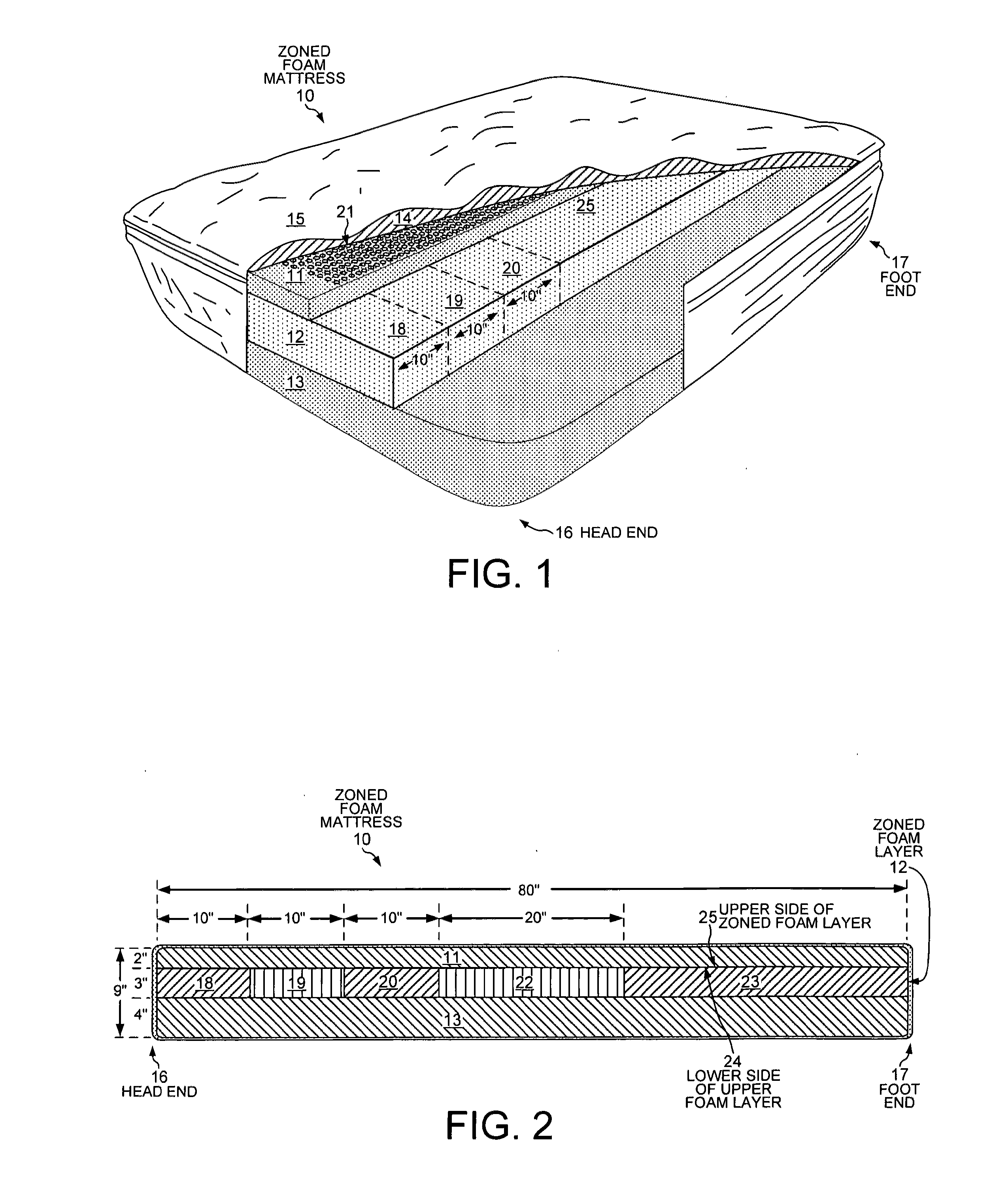Zoned foam mattress with alternating lateral regions of HD foam and memory foam
a technology of memory foam and lateral regions, applied in the field of mattresses, can solve the problems of lower sleep quality and lower hysteresis, and achieve the effect of keeping straigh
- Summary
- Abstract
- Description
- Claims
- Application Information
AI Technical Summary
Benefits of technology
Problems solved by technology
Method used
Image
Examples
Embodiment Construction
[0019]FIG. 1 is a cut-away perspective view of a novel zoned foam mattress 10. Mattress 10 includes an upper foam layer 11, a zoned foam layer 12, and a bottom foam layer 13. Upper foam layer 11 is made of visco-elastic polyurethane foam, otherwise known as memory foam. A person using mattress 10 lies directly on upper layer 11 through a thin quilted fiber padding 14 sewn to the mattress cover 15. Bottom foam layer 13 provides support for the other layers and is made of “high density” polyurethane (HD) foam. The “high density” foam is somewhat of a misnomer because upper layer 11 of memory foam has a higher density than does the HD foam. Typically, the HD foam used in mattresses has a density of between 1.5 to 2.5 pounds per cubic foot, whereas memory foam typically has a density between three and 5.5 pounds per cubic foot. Zoned foam layer 12 rests on bottom foam layer 13. Zoned foam layer 12 includes longitudinally spaced, transversely extending lateral regions of foam. The latera...
PUM
| Property | Measurement | Unit |
|---|---|---|
| Density | aaaaa | aaaaa |
| Sensitivity | aaaaa | aaaaa |
| Elasticity | aaaaa | aaaaa |
Abstract
Description
Claims
Application Information
 Login to View More
Login to View More - R&D
- Intellectual Property
- Life Sciences
- Materials
- Tech Scout
- Unparalleled Data Quality
- Higher Quality Content
- 60% Fewer Hallucinations
Browse by: Latest US Patents, China's latest patents, Technical Efficacy Thesaurus, Application Domain, Technology Topic, Popular Technical Reports.
© 2025 PatSnap. All rights reserved.Legal|Privacy policy|Modern Slavery Act Transparency Statement|Sitemap|About US| Contact US: help@patsnap.com



